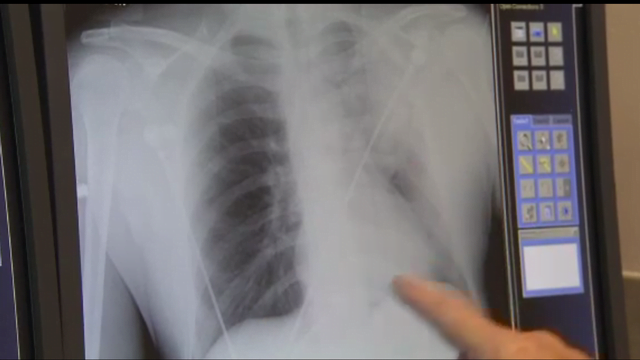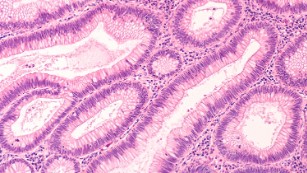 Patients who chose alternative therapies to treat a common, curable cancer instead of opting for the recommended medical treatment double their risk of death, according to a recent study published in the Journal of the National Cancer Institute.
Patients who chose alternative therapies to treat a common, curable cancer instead of opting for the recommended medical treatment double their risk of death, according to a recent study published in the Journal of the National Cancer Institute.
Conventional medical treatments include surgery, chemotherapy and radiation, while any other unproven cancer treatment administered by non-medical personnel would be considered an alternative therapy.
Yale School of Medicine’s Dr. Skyler Johnson, lead author of the study, said that based on what he’s seen as a practicing doctor, patients are increasingly refusing or delaying conventional cancer treatment in favor of alternative therapies.
As a result of that, their cancer is “advancing: either getting larger or spreading to lymph nodes or spreading to distant sites,” Johnson said. “This is concerning, because your chance of cure decreases as the cancer grows and spreads.”
A breast cancer patient with stage I cancer, for example, has almost 100% chance of surviving five years, he explained. However, stage IV breast cancer — in which it has spread to lymph nodes or a distant part of the body — reduces a patient’s chances of surviving five years to 25% or even 20%.
Delaying recommended medical treatment may allow cancer to spread and reach an advanced stage, which decreases a patient’s ability to survive, said Johnson, who reported no conflicts of interest, though two of his three co-authors have received research funding from the pharmaceutical companies 21st Century Oncology, Johnson and Johnson, Medtronic and Pfizer.
With no scientific evidence to support a choice in favor of alternative therapy, Johnson and his co-authors at Yale Cancer Center believed it would be worthwhile to examine the issue “so we could have an informed discussion based on the evidence of what the risk might be if patients chose to move forward with alternative therapies,” he said.
The most common US cancers
The researchers began their investigation by gathering information from 840 patients diagnosed between 2004 and 2013 and listed in the National Cancer Database in the US, a joint project of the American Cancer Society and the Commission on Cancer of the American College of Surgeons.
They looked at “the most common cancers in the US: breast, prostate, lung and colorectal cancer,” Johnson said.
He and his co-researchers compared and analyzed survival data on 280 patients who had chosen alternative medicine, as well as data on 560 patients who had received conventional cancer treatment.
Of all the patients choosing alternative therapies, about 44% had breast cancer, nearly one-quarter had prostate cancer, just over 18% had lung cancer, and nearly 12% had colorectal cancer.
Patients who received alternative medicine instead of chemotherapy, surgery and/or radiation had a 2½-times greater risk of dying during the 5½-year followup period than those who opted for conventional treatment, the team discovered.
Broken down by type, breast cancer patients who chose alternative instead of conventional treatment had a fivefold greater death risk, while colon cancer patients increased their risk fourfold and lung cancer patients twofold. Prostate cancer patients showed no increased risk by choosing alternative medication.
Commenting on the new study, Dr. David Gorski, a surgical oncologist at the Barbara Ann Karmanos Cancer Institute, wrote that “There are other studies showing similar results, but unfortunately they are relatively few.”
“Alternative medicine kills cancer patients,” Gorski, who was not involved in the research, wrote on the website Science-Based Medicine. “It is basically no different than refusing treatment altogether and much more expensive and troublesome.”
The new study has “limitations,” he wrote, including the possibility that the use of conventional medicine is likely to have been undercounted since some patients who choose alternative medicine ultimately “come back to conventional medicine.”
“However, if such a bias occurred, it would have tended to make the differences in survival between the alternative medicine group and the conventional treatment group smaller, not larger,” Gorski wrote. “If such a bias occurred in this study the harm caused by choosing alternative medicine is likely to be significantly worse than reported.
“There is no good evidence of specific anticancer effects from close to all (if not all) alternative medicines,” Gorski noted, adding that many alternative medicine patients aren’t receiving effective supportive care, “resulting in inadequate (or nonexistent) relief of cancer-related symptoms and unnecessary suffering.”
The patients most likely to go alternative
The reasons for choosing alternative instead of conventional medicine are “pretty broad,” Johnson said, adding that “patients are hesitant sometimes to discuss their thoughts with their physicians.”
“Anecdotally, there’s this belief that alternative therapies are as effective and nontoxic, so in their minds, why not do something just as good but have no side effects associated with that?”
The caveat is that patients will hear success stories about someone who has chosen alternative therapy but won’t realize that those people often received some or all of the recommended conventional treatment as well, Johnson said.
Other people may have a “distrust of medical institutions as a whole … or maybe physicians,” he said. “There’s a concern that maybe there’s a cure that’s being hidden. There’s a small conspiracy theory to it, as well.
“We identified people who were more likely to choose alternative medicines,” Johnson said. “And it’s usually people who have a higher income, who are more well-educated, who are healthier and who live in the West and Pacific regions of the US. We have this group of people we know who are doing this; we don’t know why.
“You’d assume that someone who is more well-educated, they have an understanding of science and medicine, they’d be less likely to make a choice like this, but that’s clearly not true, based on this data,” he said.
“There’s a path now, when we’ve achieved the goal — which is to cure cancer — where we kind of ramp down the aggressiveness of the treatment,” Johnson said. Doctors ask themselves, “Can we still obtain this cure rate and reduce the doses of the medication or reduce the doses of radiation or maybe not do such a huge surgery?”
“That’s something that’s new,” he said, and new therapies are frequently found, such as immunotherapy, that can be less toxic for patients.
“Every therapy offers a certain advantage and benefit, and some people kind of pick things a la carte,” Johnson said. “The assumption is that’s not the best for survival. That’s something we’re looking at.”
[“Source-edition”]




